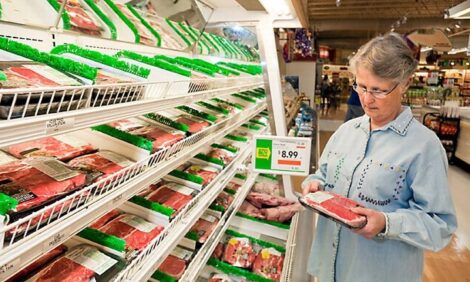



Diet Manipulation and Canola Oil Sprinkling Improve Swine Barn Air Quality
CANADA - Farm-Scape: Episode 1346. Farm-Scape is a Wonderworks Canada production and is distributed courtesy of Manitoba Pork Council and Sask Pork.  Farm-Scape is sponsored by
Manitoba Pork Council and Sask Pork  Play Audio Play AudioFarm-Scape is a Wonderworks Canada production and is distributed courtesy of Manitoba Pork Council and Sask Pork. |
Farm-Scape, Episode 1346
Canadian scientists have shown a combination of diet manipulation and canola oil sprinkling to be highly effective in reducing dust and gas emissions but less effective in reducing odor within swine barns.
The three year study involved small scale trials at the Research and Development Institute for the Agri-Environment (Institut de recherche et de developpement en agroenvironnement) in Quebec followed up by larger scale trials at the Prairie Swine Centre in Saskatchewan.
It looked at the impact of combining low protein diets with fermentable carbohydrates and canola oil sprinkling to reduce odor and gas emissions in swine buildings.
Dr. Stephane Lemay, at the Prairie Swine Centre, says reducing protein in the diet by two percent and including sugar beet pulp as a fermentable carbohydrate reduced ammonia emissions by 42 percent while sprinkling canola oil cut dust concentrations by 76 percent.
"From an air quality standpoint these two treatments combined were very very effective to greatly improve the air quality inside the building.
Either in winter conditions or summer conditions the ammonia concentration and emissions from the room were pretty much reduced by 40 to 45 percent all the time.
With a combined reduction in dust by 75 to 80 percent the resulting air quality inside the room combining these two approaches was very very good.
When we looked at the odor emissions of the building by itself, we haven't been able to reduce the odor emissions of the barn.
The initial hypothesis that we had was, by reducing the ammonia and some other gases and also by reducing the dust levels in the building, we were hoping we would be able to reduce the odor emissions at the same time but we haven't been able to show that last part".
Dr. Lemay says scientists now plan to repeat parts of the study using a different vegetable oil to get a better handle on the odor aspect.
For Farmscape.Ca, I'm Bruce Cochrane.








